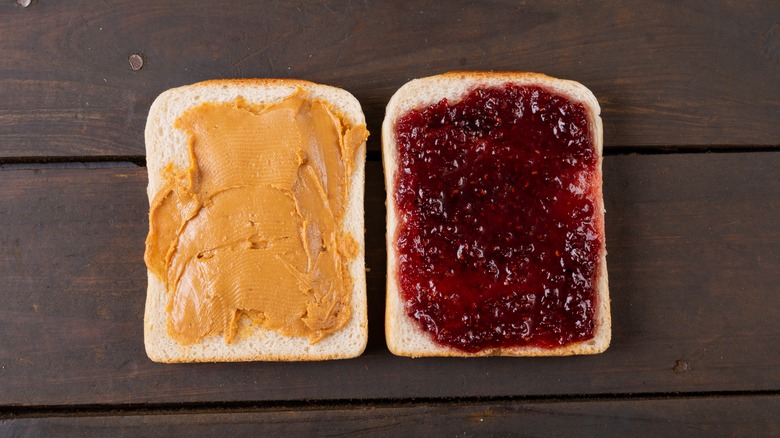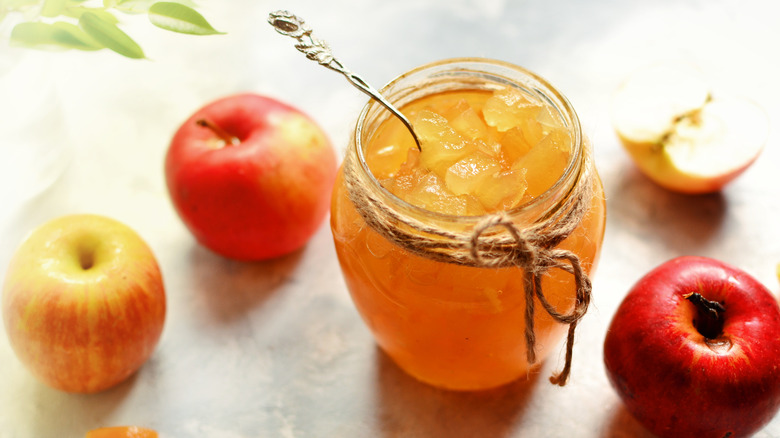The Easy Ingredient Swap For An Autumnal PB&J Sandwich
Got fall fever? We do — and, judging by recent commercial campaigns, you probably do, too. Some companies, like Dunkin', have already released their fall menus weeks ago, even though the actual first day of fall isn't until September 22. But, we understand the excitement. From maple syrup to apple pie to your favorite fall coffee flavors, the autumn season is a flavor-packed playground. Last year, researchers at Johns Hopkins reported that, scientifically, consumers love pumpkin spice because the flavor triggers neurological olfactory receptors with positive associations in the brain, like family gatherings at Thanksgiving or "rustling fall leaves," per USA Today.
With the arrival of fall comes the return of school, which means it's time to start packing lunches again. According to the National Peanut Board (yes, it's a real thing), the average child in the U.S. will eat roughly 1,500 PB&J sandwiches before their high school graduation. (If the average high school senior is about 18 years old, that equates to just over 83 PB&Js every year from birth.) But, if you're like a lot of us, there's a good chance you probably still enjoy a good old-fashioned PB&J well into adulthood. If you're tired of pumpkin spice but still want to partake in the tastes of fall, luckily there's another signature autumnal flavor on the docket — and it'll take your PB&J sandwich to the next level.
Spice it up with apple jelly
The secret ingredient swap for an autumnal PB&J? Apple jelly. (If you have a serious case of fall fever, pair that apple jelly with some homemade honey apple butter.)
To make apple jelly at home, selecting the right type of apples is the name of the game. Professional chef and restaurateur David Lebowitz recommends opting for green varieties. He explains that their naturally high acidity and high levels of pectin help create a "balanced" flavor profile as well as help the jelly set up. However, if you have a bit of a sweet tooth, apple specialist Stemilt recommends using Ambrosia, Fuji, or Gala apples for jelly-making. These sweeter varieties make a great fit for a spread like jelly, which uses just the juice of the fruit. This way, you won't have to introduce any (or much) additional sugar into your recipe. Simply Recipes even suggests adding thin slices of fresh apple into your sandwich for an unexpectedly dimensional texture.
To get the right pectin levels without having to add any additional amounts, the National Center for Home Food Preservation suggests using a combination of three-quarters ripe and a quarter unripe apples to make your jelly. For a super autumnal lunch, try sipping a Hot Toddy or a glass of locally-sourced apple cider while you enjoy your apple jelly PB&J.

